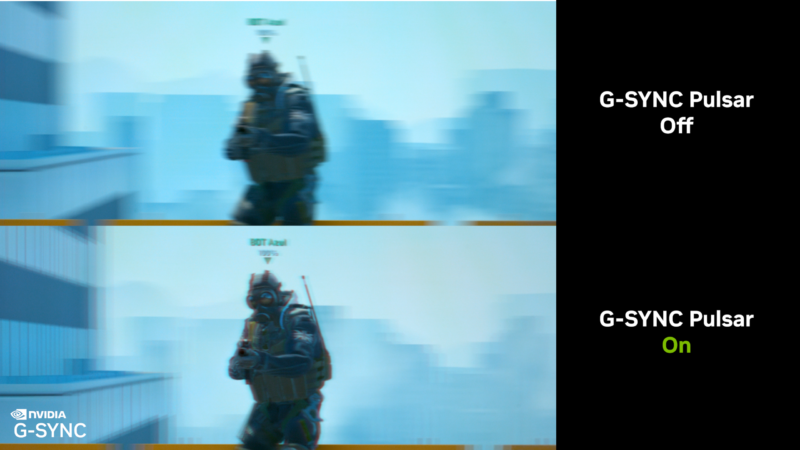- Регистрация
- 17 Февраль 2018
- Сообщения
- 22 707
- Лучшие ответы
- 0
- Баллы
- 2 093
Offline

Enlarge / None of this would be necessary if it weren't for your inferior eyes, which retain the colors of pixels for fractions of a second longer than is optimal for shooting dudes. (credit: Nvidia)
Gaming hardware has done a lot in the last decade to push a lot of pixels very quickly across screens. But one piece of hardware has always led to complications: the eyeball. Nvidia is targeting that last part of the visual quality chain with its newest G-Sync offering, Pulsar.
Motion blur, when it's not caused by slow LCD pixel transitions, is caused by "the persistence of an image on the retina, as our eyes track movement on-screen," as Nvidia explains it. Prior improvements in display tech, like variable rate refresh, Ultra Low Motion Blur, and Variable Overdrive have helped with the hardware causes of this deficiency. The eyes and their object permanence, however, can only be addressed by strobing a monitor's backlight.
You can't just set that light blinking, however. Variable strobing frequencies causes flicker, and timing the strobe to the monitor refresh rate—itself also tied to the graphics card output—was tricky. Nvidia says it has solved that issue with its G-Sync Pulsar tech, employing "a novel algorithm" in "synergizing" its variable refresh smoothing and monitor pulsing. The result is that pixels are transitioned from one color to another at a rate that reduces motion blur and pixel ghosting.
Read 6 remaining paragraphs | Comments
